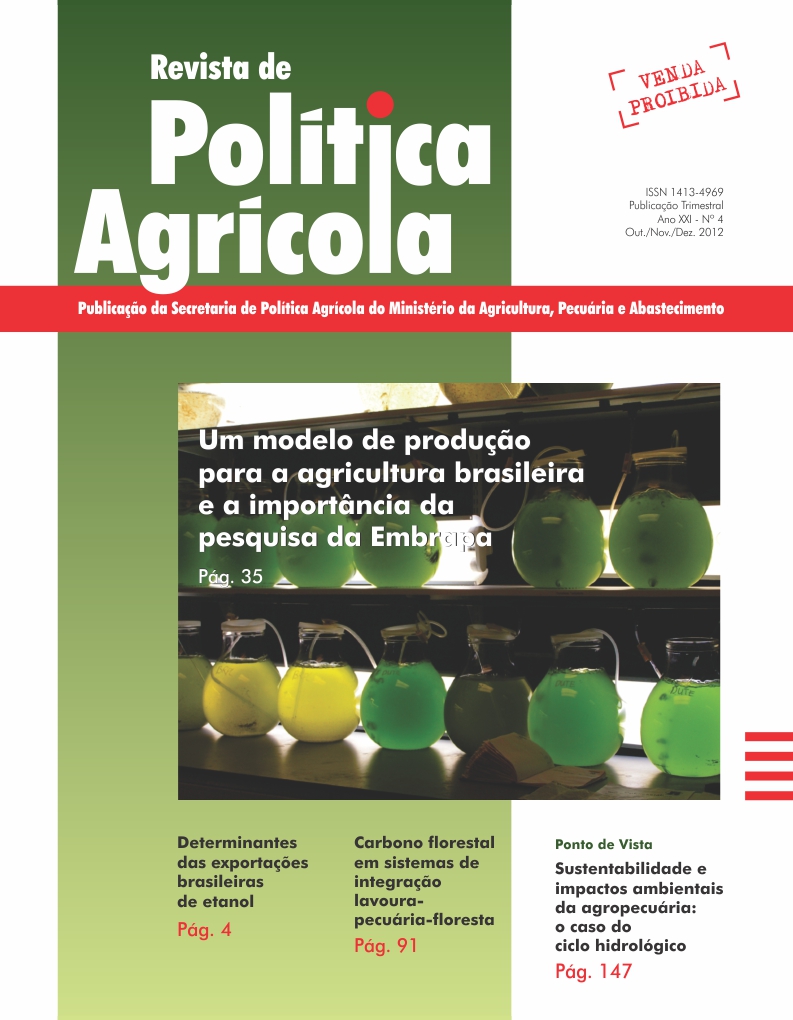A production model for the Brazilian agriculture and the importance of Embrapa’s research
Keywords:
technical efficiency, stochastic frontiers, production function, rural poverty, productivityAbstract
This work adjusts a stochastic frontier model for the Brazilian agriculture based on a representative sample of the primary data from the Brazilian agricultural census of 2006. The study used the normal half-normal model of combination of errors for the random and inefficiency components. The production function of the model is defined in the Cobb-Douglas family and includes the inputs land, labor, and technological inputs. For the Brazilian agricultural census of 2006, the elasticity of technological inputs prevails. The presence of technical effects in the error components is postulated. These effects include several income classes, regions, technical assistance, and the perception about the importance of Embrapa’s research in improving the income of rural producers. The presence of technical assistance and the non-categorical variables, such as the importance of Embrapa and the likelihood of positive net income, positively affect the technical efficiency component. These results remain the same with the inclusion of notes representing the Brazilian agricultural census of 1995–1996.Downloads
How to Cite
Alves, E., Souza, G. da S. e, Gomes, E. G., Magalhães, E., & Rocha, D. de P. (2015). A production model for the Brazilian agriculture and the importance of Embrapa’s research. Revista De Política Agrícola, 21(4), 35–59. Retrieved from https://rpa.sede.embrapa.br/RPA/article/view/264
Issue
Section
Artigos Científicos


